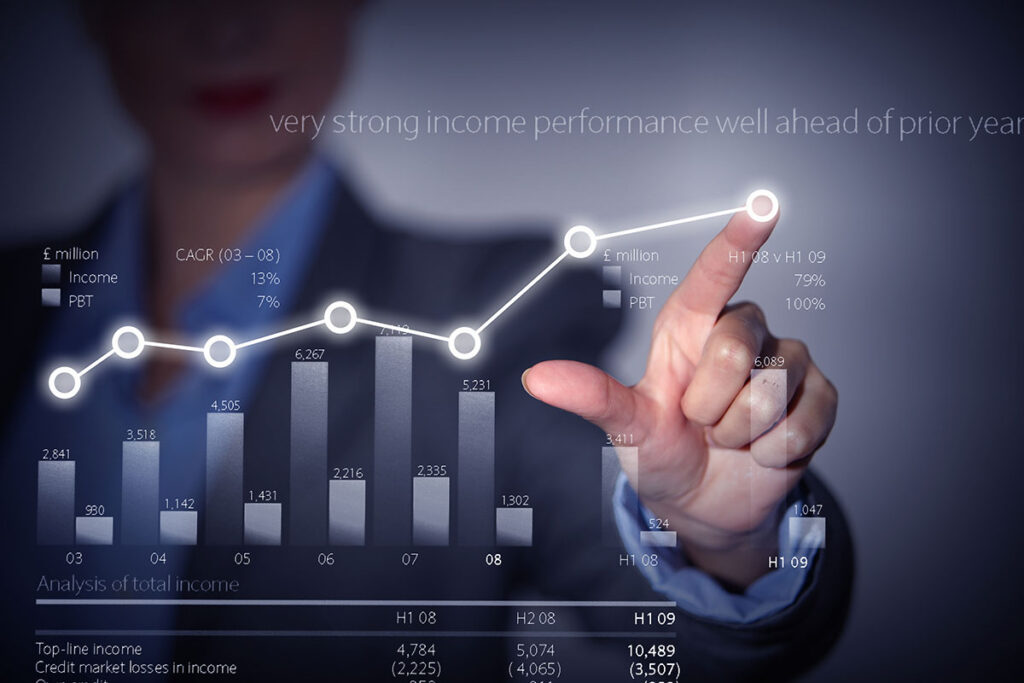What is Sales Forecasting and How it Can Aid in Business Planning
In the Small and Medium-sized Business (SMB) world, you need to think in terms of time. The need to learn from the past is clear. But you should also be thinking about the future. In the cut and thrust of commerce, preparedness is all. You should be looking ahead to see how things are likely to pan out at particular points in the future. This is the way you can plan effectively.
You can look at several factors, including labor issues and overall direction. But one of the most telling areas to consider is income from sales. To get this figure, you need to conduct some sales forecasting.
What is sales forecasting?
Everybody who has worked in sales is familiar with sales targets. They’re the goals to which a sales body should be working towards. Are they certainties? No. They’re not even necessarily entirely probable. They’re just goals to aim at. They come with big ifs.
Sales forecasting on the other hand is all about what’s likely. When tasked with coming up with sales forecasting data, a sales section will look carefully at any sales opportunity ahead of it, and the probability of closing each one. This requires an honest appraisal of your own company’s selling resources. You have to define the business capability levels of your organization to see if you have the bandwidth to see a sale through at a particular juncture.
This last factor can be particularly significant if you have new products coming on-stream that, while offering heightened sales potential, will require heavier staff input to make the sale.
As well as assessing upcoming opportunities, the forecast will take into account historical data to appraise likely performance levels for a given time of year.
A forecaster should also include external factors such as industry trends and technological change. Additionally, there should be awareness of any relevant economic and statutory developments that might impact the sales landscape.
In other words, accurate forecasting is complex.
Yet more complex
In fact, the more you look at what sales forecasting is, the more complex it becomes. For instance, when sales bodies are looking at upcoming opportunities, they are looking not just at the amount of money that closing a deal represents. They’re also taking into account who’s doing the buying and why the buyer might want the product.
Accurate sales forecasts also include an idea of how a particular customer makes buying decisions. Say you know that a company’s buyer only feels confident enough to commit once they know the latest interest rate data. For this reason, they only ever make purchases after the Federal Open Market Committee has had one of its regular meetings and made its rate announcement.
So, let’s assume you want to forecast the likelihood of a sale to this particular client in February. An awareness of their decision-making process will tell you that they may want to hang on with their decision until the next scheduled FOMC meeting, in March. This is the kind of insight that will help make forecasting more accurate.
What is sales forecasting good for?
Keeping an eye on future performance levels is sensible, in that it aids decision-makers to foresee landscapes before they arrive, allowing for more informed decisions. Here are some specific ways that accurate sales forecasting can help SMBs to navigate their way forward.
- Future sales revenue forecasting
Whatever your business is about, it’s important to have a good idea of what its financial state will be at a given point in time.
You’d want to focus on your enterprise architecture EA to transition your business from its current state to adapt to upcoming changes. Such infrastructure changes can cost a good deal of money, and while you may think your business has the finances right now to pay for it, it’s sensible to look forward to seeing what the future sales performance situation will be in the months ahead.
It may be the case, for instance, that September is always a good month, but customer demand nosedives in October and November. Without historical-data-driven sales forecasting, you may come to regret any wild September spending.
- Target setting
Targets are necessary to give sales managers goals to aim performance at. However, sales quotas can become irrelevant when not based on reasonable ideas of what’s possible. Sales forecasting is how these ideas can take shape.
If you have a store selling different types of phone systems, you might decide to have a uniform sales target of, say, 5% up on last year, across the board. However, although this is certainly a very quick and straightforward way of arriving at targets, it’s a little unsophisticated.
Far better to use sales forecasting to tell you, for instance, that the sales figures for PBX are likely to be soft and VoIP sales much more buoyant. You can then apply a more relevant sales target figure, which will engage and energize your sales team.
- Resource allocation
Using an accurate forecast to tell you how sales are likely to go in the future can help you decide where to place your resources. You can double down on areas that are high in potential and rein in those sectors that are looking very unpromising until their time comes around again.
- Problem solving
Being able to spot upcoming difficulties in good time can make all the difference to your ability to deal with them. If your sales forecasting is predicting some rocky times ahead, you can try to remedy matters in a timely manner, by, for instance, re-shaping certain parts of the business or giving your sales leaders adequate preparation.
- Plan growth
Knowing what’s ahead will enable you to produce realistic growth projections. Business growth usually consists of a series of discrete steps, taken at precisely the right time. Having a good idea of the health of your business at any point, as well as the landscape surrounding it, will enable you to plot out a reasonably accurate growth chart for your endeavor.
How to do sales forecasting
So now you have an answer to the question ‘what is sales forecasting’, and what it’s for? Here are some sales forecasting methods.
Define the sales operation
Start by being very clear about what happens in each step of the sales process. What has to be in place before the next step in the sales funnel can be taken? Who’s responsible for this? What does completion look like?
Get everyone involved in the process to contribute their perspectives, so that you end up with a representative picture of what goes on.
Once you have such elements clarified, be sure to document them in a readily comprehensible manner. Use internal communications wisely to make sure to have everyone buying into this version so that you have standardization across the board.
Get the right tech
Your CRM should be able to incorporate forecasting data so that it can flex with the ups and downs of business levels. You should consider introducing AI-enabled forecasting tools to really make inroads into your sales stack. You should also have the ability to sync everything in real time so that you are exploiting the newest data across the board.
Look into the pipeline
Keep an eye on what’s going on in that sales pipeline of yours. See what’s just down the track, as well as seeing what’s holding deals up.
For a good overview of your pipeline, you need to know what your reps are doing at any point. How are they interacting with each other and with any tech they have at their disposal? For instance, are they using the sales pitch generator to its fullest extent?
Crucially, is their data being collated correctly to be used in sales forecasting? Is there consistency in product data across your sales and accounting systems?
Decide on methodology
Knowing which methodology works best for you will change depending on your business and typical sales patterns.
- Historical forecasting
This is a sales forecasting tool primarily built around a historical sales picture. How did things work out over a similar period in the past?
- Pipeline forecasting
What’s the situation in your pipeline? Does it look like there’s a good level of sales potential coming up?
- Opportunity stage forecasting
This forecasting process looks at the stages that your sales deals are currently at and works out upcoming sales figures based on how likely deals are to close successfully.
- Intuitive forecasting
This forecasting model is less scientific than some methods, in that it uses anecdotal accounts from front-line sales staff, say on the difficulties around re-energizing inactive customers, to inform predictions.
- Sales cycle forecasting
The length of time taken to close each deal is what feeds into this sales forecasting process. You can zero in on particular sales reps, or macro out across the entire sales organization.
A final word on forecasting
Being able to answer the questions of what sales forecasting is, why to use it, and how to go about it is only part of the deal. You also need to implement it frequently and regularly. Monthly is a good frequency to adopt.
Sales forecasting needs to become part of the routine so that you have more continuity of outlook. Nasty surprises become more infrequent the more often you conduct sales forecasting.
One last thing. It’s a good idea to use more than one approach, to model different scenarios based on variations in, for instance, business climate. The more sophistication you can build into your sales forecast, the more useful it will be.




